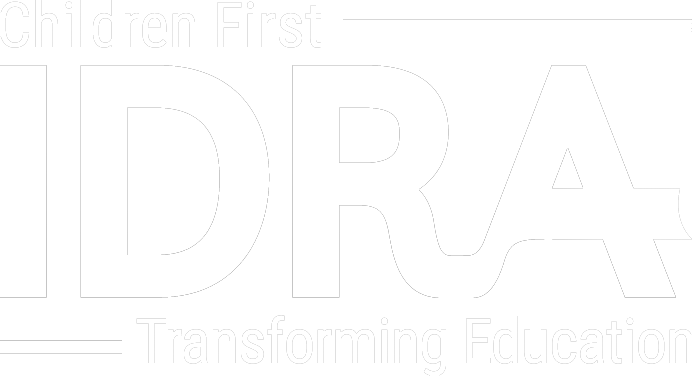• by Ann Bastian • IDRA Newsletter • November – December 1996 •
Being asked to write an article against school choice is a bit like being asked to burn the American flag at a VFW meeting. You have every right to do it, but do you want to? After all, choice is a bedrock American value. Applied to schools, it sounds great: Students and parents get to choose, deserving schools get chosen.
But what if this is not the reality of school choice? In reality, school choice means very different things in different contexts. From the many versions of choice, we can construct three broad categories.
First, there are choice programs within a single public school district. These local, “controlled choice” plans seek to expand educational options.
Second, there are interdistrict and statewide public school plans. These seek to establish a public marketplace of schools through competition for enrollment.
Third, there are voucher plans that include private schools. These seek to create an unrestricted marketplace of competing public, private and parochial schools.
Much of the debate over school choice has focused on vouchers. It was, after all, the key educational platform of the Republican Party. Vouchers deserve the most critical scrutiny as a threat to public education. But we should also look closely at the problems and potentials of choice programs that are strictly within the public schools.
The most promising examples of choice have occurred in the first category, within single public school districts. The programs most often cited are East Harlem in New York City, Montclair, New Jersey and Cambridge, Massachusetts. These programs, while not perfect, suggest several important features of a good choice model:
- Choice is just one element in a comprehensive reform strategy.
- Every school in the district has become a school of choice.
- School missions are diverse but have been developed in complementary rather than competitive ways.
- Teachers are given the time, training and power to shape the school mission; parents also have a strong voice.
- Transportation costs are covered by the district.
- Parents and students are given enough information to make informed choices.
- Districts have secured significantly higher funding to sustain school improvement.
We should be fully aware, however, that even within a single public school district, controlled choice is no miracle cure for education. Where it works, it is one tool among others, and it only works well when there is a prior and steadfast commitment to equity, adequate funding and internal school restructuring.
Creating Islands of Excellence?
School districts should be particularly cautious about choice programs that improve only a limited number of schools. This is often the case in “magnet” programs where students apply to “specialty” schools to go around, choice is more likely to create islands of excellence (or adequacy) than it is to stimulate improvement across the board.*
When the good choices are limited, we see choice schools creaming off the most academically qualified students. Choice becomes another form of tracking. Studies also show that the parents who utilize limited choice systems, even within poor districts, are likely to be more active, more educated, and financially better off. This only adds another dimension to the parental advantage that controls educational opportunity for most children. At the same time, parents gravitate toward schools that reflect their own racial and cultural background, so that limited choice offerings have not lessened school segregation.
The results become very stark when we look at America’s urban high school systems, where flagship academic magnets serving middle school students contrast with desperately deprived neighborhood high schools for the working class, the poor and communities of color.
The same problems are posed by charter schools, which are intended to be unique, exempt from bureaucratic mandates and operated under special contract with school districts. Like magnets, charter schools are promoted as models for innovations. The problem is that if charter schools don’t embrace the highest standards of equity in the students they enroll and retain, they too become another way to layer and segregate the choices in a school system. Given the current conditions of fiscal crisis and polarized resources facing most districts, charter schools can easily end up as isolated refuges for the adamant, the lucky, and by design, the privileged.
Unless our commitment to quality includes all schools, we are building more lifeboats, not better ships. The challenges for school choice are compounded in the second category, which includes interdistrict and statewide public school choice. In this marketplace model, every public school competes for enrollments, on the premise that enrollment dollars are sufficient incentives for school innovation and improvement and that competition will reward the best. Eleven states have implemented varieties of statewide public school choice.
The data thus far are sketchy, except for the fact that nowhere has interdistrict choice ignited a revolution of school restructuring, parent engagement and educational improvement as its proponents originally claimed. None of the statewide choice plans have included significant new resources for multiplying better schools or helping those at the bottom. Moreover, few states subsidize transportation costs for interdistrict transportation costs for interdistrict transfers, ensuring that the class barriers to choice remain high and that outcomes remain skewed.
Overall, studies show that only a small number of parents opt for choice in statewide open enrollment programs. Data from four statewide plans (Minnesota, Massachusetts, Arkansas and Arizona) indicate that choice participants are disproportionately White and affluent. Again, parental advantage seems decisive.
Dangers of Marketplace Models
The limits of the marketplace models of choice are becoming clearer. The past decade of experience points to three central dangers:
- Widening the gap between education “haves” and “havenots.” Instead of becoming a tool for reform, this choice model rationalizes and accelerates inequity. It allows already advantaged schools to cream students and resources from other districts, leaving poorer schools and their students further depleted.
- Weakening the link between schools and local communities. In a large-scale marketplace model, schools are no longer bound by geographical or political communities. Schools and students would become even more removed from their neighborhoods. Community control of schooling would be further eroded, making it even harder for communities of color and people who are poor to fight for equity and reform. Taxpayers, voters, relatives and citizens would feel even less invested in education.
- Promoting the marketing of schools. Where schools are competing for premium enrollments, the ability to attract students would depend as much on their ability to advertise as their capacity to educate. The obvious temptation would be for schools to rely even more heavily on standardized test scores and test driven instruction, the “steroids approach” to performance enhancement.
The debate over school choice will be with us for a long time, even if voucher plans and private school choice options are soundly defeated. In weighing the problems and potentials, we need to keep in mind the most basic and practical question for any choice program: Does if fix what’s really wrong?
There is nothing inherent in school choice that deals with key issues such as smaller class and school size, teacher training, multicultural curricula, teacherparent collaboration, youth services, or equal and adequate funding. Moreover, choice is deflecting attention from such key issues.
Nowhere have limited or selective choice schools been found to promote restructuring in schools across the system. A national study by the Carnegie Foundation concurs with the conclusions drawn in a recent review of choice and voucher programs by the Harvard School Choice Project: “It seems unlikely that choice by itself will stimulate creativity and improvement in the development of new, more effective educational programs.”
The hard reality is that there is no short cut to building good schools. Like parenting children, educating children is based on human relationships, the quality of which depends very much on the support systems surrounding the family and school. We have public education because we need a community and government support system to sustain this enormous undertaking, to make an unconditional investment in every child, to invest in the future as well as the present, to serve both individuals and communities.
School enrollments are not chips to be brokered in a marketplace, public or private. Even in our postindustrial consumer society, some choices are not about buying and selling.
This article is reprinted with the permission from Selling Out Our Schools by Rethinking Schools.
* IDRA’s work in school desegregation and magnet schools confirms that magnet schools are not islands of excellence when they are part of a districtwide comprehensive strategy. IDRA’s study, Magnet Schools: Pockets of Excellence in a Sea of Diversity by Bradley Scott and Anna DeLuna (1995) provides indicators of effectiveness that include magnet schools in collaboration with non-magnet schools in a given district by sharing resources, staff development and programs.
Resources
Fuller, Bruce, Richard Elmore and Gary Orfield. Who Chooses? Who Loses? (New York, N.Y.: Teachers College Press, Columbia University, 1996).
Carnegie Foundation. School Choice: A Special Report. (Princeton, N.J.: 1992).
Henig, Jeffrey. Rethinking School Choice: Limits of the Market Metaphor. (Princeton University Press, 1994).
Rasell, Edith and Richard Rothstein. School Choice: Examining the Evidence. (Washington D.C.: Economic Policy Institute, 1993).
Ann Bastian is a senior program officer at the New World Foundation, an education policy consultant and a history teacher. Comments and questions may be sent via e-mail to feedback@idra.org.
[©1996, IDRA. This article originally appeared in the November – December 1996 IDRA Newsletter by the Intercultural Development Research Association. Permission to reproduce this article is granted provided the article is reprinted in its entirety and proper credit is given to IDRA and the author.]



